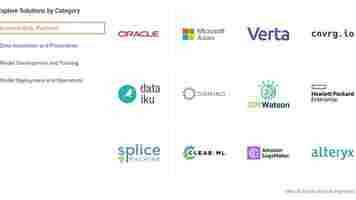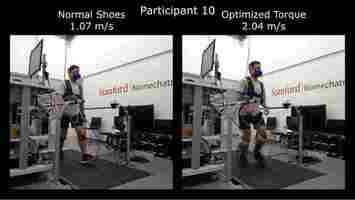After firing Timnit Gebru, Google is now investigating another researcher in its ethical AI division
Google has suspended the corporate account of Margaret Mitchell, Timnit Gebru’s former co-lead of the Big G’s ethical AI division, claiming she shared thousands of internal files with people outside the company.

A source told Axios that Mitchell had been using automated scripts to find messages showing discriminatory treatment of Gebru, whose recent ousting from the tech giant sparked outrage among colleagues.
A Google spokesperson said the company was investigating the incident:
Gebru tweeted on Tuesday that Mitchell had not been fired “yet,” but that the researcher would be locked out of her account “for at least a few days.”
Mitchell has been a vocal critic of Google’s treatment of Gebru since the researcher’s forced exit from the company in December.
Gebru said she was fired in retaliation for an email sent to colleagues that reportedly criticized the Big G’s Diversity, Equity, and Inclusion operation. Google executive Jeff Dean tweeted that she had resigned over conditions the company requested before publishing a research paper she co-authored on large language models.
Mitchell said her team had started using the term “resignated.”
Thousands of scientists to sign an open letter expressing solitary with Gebru. Her departure was also cited in the announcement of the Alphabet Workers Union.
Google CEO Sundar Pichai has sought to quell the outrage, but his efforts have been criticized by employees — including Mitchell.
Hours before news broke of her suspension, the research scientist lambasted Google for “consistently alienating Black women.”
Her suspension will escalate the growing tensions between Google employees and management.
This nifty online guide compares AI/ML tools and platforms
TWIML , an organization dedicated to demystifying AI/ML, recently filled a need in the market by launching a ‘Solutions Guide’ to open source and enterprise AI tools and platforms.

TWIML’s Solutions Guide consists of several infographics and a litany of research and information meant to make the search for just the right ML solution easy.
Per TWIML’s website :
Up front: It can be difficulty to dispel vendor hype and get to the meat of a product in the AI world. Not only do enterprises and IT staff have to account for their business’ unique needs, but they have to deal with slick marketing teams and eager sales staffs who’re often more interested in selling you a product than ensuring you’ve got the right solution for your needs.
TWIML’s Solutions Guide is an impressive response to this problem. Before ML devs even start talking to a vendor they can visit the page and check out information on the most popular available solutions on the market and compare features.


The major players such as Amazon, Microsoft, and Google are all listed, as are numerous popular open-source offerings.
Currently you can explore solutions in the following categories:
End-to-End ML Platforms
Data Acquisition and Preparation
Model Development and Training
Model Deployment and Operations
This is an already robust offering containing information on a large portion of what’s out there. But TWIML says it’s just getting started. It’ll be updating the lists to add new categories and solutions.
Quick take: This is fantastic. Enterprise AI isn’t the sexiest topic for Neural, but we’re big fans of anything that gets the right tools into the right hands.
And that’s because it’s a dog eat dog world out there and even someone who’s been immersed in the business of machine learning can get a little overwhelmed with the marketing blitzkrieg that accompanies new entries.
Furthermore, even if you’re 100% clued-in to what’s going on out there, it can be a pain in the butt to try and explain the differences between a dozen different similar services to a C-suite executive who doesn’t specialize in technology.
TWIML’s Solution Guide makes it dead simple to show laypersons what they’ll get if they invest in a specific platform or system.
For more information visit TWIML’s page here .
Scientists developed AI-powered ankle braces to make you walk faster
A team of scientists and engineers at Stanford University recently developed an AI-augmented walking gadget that could help us all pick up the pace while burning less energy.

Behold the Stanford ankle exoskeleton:
Up front: While the device itself is a complex mash-up of AI and mobility technologies, the idea behind it is pretty simple. It connects to a user’s ankles and supports movement using a pulley system that lifts the wearer’s heel up when they step, thus reducing the energy and force necessary to point their toe down as they begin the next step.
Per the researchers‘ paper :
A 42% increase in walking speed is a remarkable improvement. The researchers expected some improvement based on the mechanics of the device alone, but the addition of self-learning algorithms and the use of a human-in-the-loop during training seems to have propelled its efficacy far beyond just a minor performance bump.
Quick take: The big idea here is to eventually develop mobility solutions for the elderly and/or disabled. The current system is an early prototype for future research. Not only does it take hours to calibrate, but it’s only been tested on young, healthy adults so far.
Nevertheless, this is an important step in the right direction for humanity as a whole. If the idea is to optimize our ability to traverse our world, any solution that allows us to reduce our energy consumption while overcoming nominal physical limitations should be considered worthwhile.
Read the whole paper here .